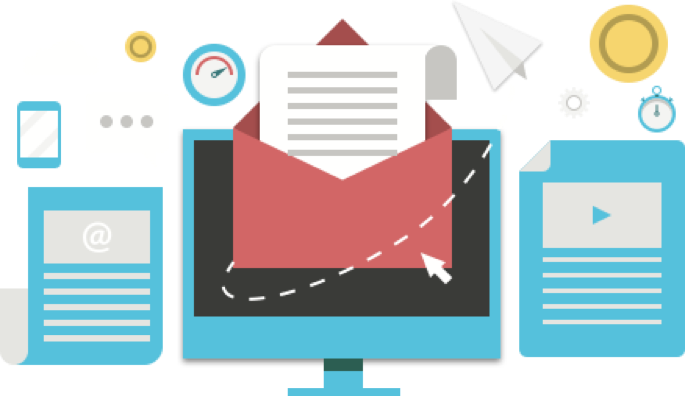You’ve probably already heard all of the warnings about how a positive candidate experience is paramount to your success as an employer these days.

A positive experience fosters a lot of enthusiasm and passion around your company. But, a bad experience? Well, that sends top talent running for the hills – or worse – social media.
Thanks to social, everybody is a publisher these days. Treat applicants as such!
When four out of five job applicants believe that candidate experience serves as a direct representation of how a company values its people, you simply can’t afford to let applicants feel undervalued and ignored.
Like what you see?
Don’t miss out. Subscribe to our quarterly digest to get the latest TA and TM resources delivered right to your inbox.
But, here’s the challenge: Establishing a positive experience at every single stage of your recruitment funnel takes a lot of effort and time. Not just to set up, but to curate as well. And unfortunately, time is one of those things that you don’t necessarily have when you’re busy juggling all of the other tasks on your plate.
Fortunately though, as hiring becomes increasingly digital, this is an area where you can easily leverage technology to provide a consistent experience for candidates—without needing to invest endless hours and buckets of elbow grease.
Let’s break down how recruitment technology can lighten your load and improve the candidate experience at every stage of your hiring funnel. If you’re more interested in quick actionable tips check out our other article on the candidate experience here.
In this article we’ll follow the stages of the recruitment funnel below. We’ll start with attracting candidates, followed by the application process itself, the screening process and in the end, onboarding.

And keep in mind, it’s all about the candidate experience here, and how technology – as counterintuitive as it may seem – can improve it.
Let’s go!
Stage One: Attracting Candidates
It all starts with attracting candidates. And attracting candidates starts with your employer brand. It’s your public representation that gives candidates the lowdown on who you are as an employer—which is information they’ll need when determining whether or not your company is a place they’d like to work.
According to LinkedIn, 75% of job seekers consider an employer’s brand before deciding to apply to a job.
And to go even further, candidates state that the single largest obstacle they face when searching for a role is not understanding what it’s actually like to work for an organization.
To satisfy candidates, capture their interest, and attract top talent, you need to empower them with that need-to-know information. What are they looking for at this stage in the game? Well, they’d like to take a peek behind the curtain and gain an understanding of things like:
- Your values
- Your overall company culture
- The experience of your existing employees
Unfortunately, employer branding is still an area where companies fall short. Posting a standard job description isn’t enough to woo top-notch talent into applying for your open roles. Especially with today’s shrinking job market and the so-called ‘War for Talent’ that’s raging in many industries, you need more to stay on top.
How Technology Can Help
To start, recruitment videos are an excellent way to elevate your employer brand and give candidates a better feel for your organization.
According to data from Careerbuilder, job postings that include video are viewed 12% more than postings without video. Even further, they receive a 34% greater application rate!
So, think of some places where you could include video for potential candidates—whether it’s directly on your “Careers” page like HubSpot or clips on your social media channels. Those recruitment videos will involve a bit of a time investment up front, but they’ll be an undeniably powerful asset for your employer brand.

We love using Hubspot as an example of proper employer branding. Not surprisingly,
they are consistently found amongst many ‘top 5 of best employers to work for lists’.
In addition to video, programmatic job advertising is another technological advancement that can improve this stage of your recruitment funnel.
If you’re unfamiliar, programmatic advertising means in short: automated and specifically targeted advertisements. Using complex algorithms, your job ads are displayed to the right person on the right site at the right time, based on this particular person’s interests and behavior on the web.
These types of advertisements can be a huge benefit to you when hiring. Not only do you save time by not having to post job ads one at a time, but you’ll also reach the candidates that best fit what you’re looking for. In fact, research shows that programmatic job ads delivered 8% more applicants to the final stage in the interview process, when compared with traditional job boards.
Top Tip:
Although the terms ‘programmatic’ and ‘automated advertising’ might sound technical and complicated, there are many platforms out there that let you tap into the power of programmatic advertising and are easy to use as well. Think Facebook, LinkedIn, Google Adwords and this one, which is designed for recruiters specifically.
Stage Two: Receiving Applications
If there’s one thing that serves as a large frustration for candidates during this point in the process, it’s the radio silence that follows many job applications. That lack of communication and general feeling of being left out of the loop is disheartening.
In one survey about how employers could drastically improve candidate experience, 34% of respondents said that they’d like more communication—it was the top answer among survey participants.
And, if you look at many of the other factors included in the below chart, many of them also deal with communication (including timeliness of replies and status updates).

We know what you’re thinking: Frequent communication takes a lot of time. Fortunately, technology can assist you.
How Technology Can Help
First and foremost, automated email sequences are an effective way to keep candidates in the loop—without you needing to commit your entire day to communication.
You can create sequences that are as simple or as complex as you’d like. Perhaps your first email will include confirmation that the application was received, and then an email a couple of days later will provide a breakdown of next steps.
With the right tools in place, it’s a small effort with a huge impact that candidates will definitely appreciate. According to Talent Board’s North American Candidate Experience Research Report, 69% of candidates receive an automated “Thank you for applying” message—but only 34% receive a reminder of next steps in the process.
You should also consider leveraging technology in order to empower candidates to be able to check on the status of their own application. Only 43% of candidates are able to view the progress of their application.
By utilizing hiring software where candidates can stay posted on their own status, you’ll improve their experience—while simultaneously eliminating a good chunk of those “check in” emails you need to respond to on a daily basis, win-win!

Email automation – if done right – can be a game changer for your workload as well as your overall candidate experience. Look into it, but try to go beyond the standard ‘Thank You’ email. Build sequences, keep candidates posted and watch your candidate satisfaction take off.
Stage Three: Screening Candidates
When candidates have made it to the screening stage of your recruitment funnel, there are a few things that they’re actively looking for:
First and foremost, they’re eager for the opportunity to showcase their skills. The limited bullet points of a resume can only tell you so much. And, when there’s pressure to stand out against the job search competition, applicants are eager for any chances to demonstrate what they’re capable of.
In a similar vein, employers who have highly engaging screening processes provide a much better candidate experience. By coordinating assessments and activities that actually highlight what’s required for that role, applicants are far more engaged and you can make a more accurate hire based on data.
Finally, candidates are also hungry for feedback at this stage—particularly after being taken out of consideration. They’re eager to know how they can improve moving forward.
How Technology Can Help
One of the best things you can implement during this step in your hiring process are Automated Online Situational Judgement Tests.
These interactive assessments give candidates a far better grasp on what’s required to fulfill that role, while also empowering you with data and information that you can use to make the smartest hire. Applicants are presented with real, on-the-job scenarios and asked to identify the most appropriate response and they’re embedded as an easily customizable feature in Harver.

SJT’s give applicants an idea of what the job is like.
Another way you can leverage technology in this part of the funnel? By sending emails that include automated feedback reports for candidates.
As we mentioned, applicants are eager to hear constructive criticism from employers. Yet, according to Talent Board’s same report, 64% of candidates receive zero feedback after they’re dispositioned. Even further, less than 4% of candidates are given feedback that summarizes the results of their assessments.
By implementing an automated system that you can use to offer this crucial feedback to candidates, you’re sure to elevate their experiences—even if you end up rejecting them, like so.

With today’s technology, it’s possible to automatically generate personal
Feedback reports for applicants.
Stage Four: Onboarding New Hires
Your candidate experience doesn’t end once the ink is dry on that offer letter. The first few days that a new hire spends on the job are an important piece of the puzzle.
Don’t think onboarding matters all that much? Think again. Up to 20% of employee turnover happens within the first 45 days of employment. And, new employees who went through a structured onboarding program are 58% more likely to be with the company after three years!
However, there’s a lot involved with onboarding. There are various stakeholders that all need to participate and tons of different boxes that need to be checked—from getting that employee a computer login to working on benefits enrollment.
It’s an equally overwhelming time for both the employer and the new hire. So, staying organized and on top of things is key.
How Technology Can Help
If you aren’t already using a software solution to take some of the pain out of the onboarding process, you should be.
With the right employee onboarding software, you can coordinate between all different departments and keep all of your new hire-related forms, notifications, and tasks in one centrally located place. And to add to the experience, you can add explanatory videos, a tour through the office and pour all of it into an app.
That way, you can ensure a smooth onboarding process while still getting your new hires the information they desperately need. This is what your brand new employees really want—to get up to speed so they can hit the ground running.
Streamlining your onboarding process not only improves things for your employees, it has positive impacts for you as well. For example, when Google introduced an automated reminder that pinged hiring managers with a five-step checklist the night before a new hire started, they were able to reduce onboarding time and get new hires up to full productivity 25% faster.
Over to You
You know the importance of a solid candidate experience—but, that doesn’t mean you have endless hours to invest in improving things.
Fortunately, technology can remove a lot of the burden from your shoulders. As we’ve discussed here, consider leveraging technological solutions at each stage of your recruitment funnel, and you’re sure to notice an improvement in your candidate experience—as well as the quality of your hires.
Stop guessing,
Start data-driven hiring.
Learn how you implement a modern candidate selection process, that is: streamlined, experience-driven and backed by data.



